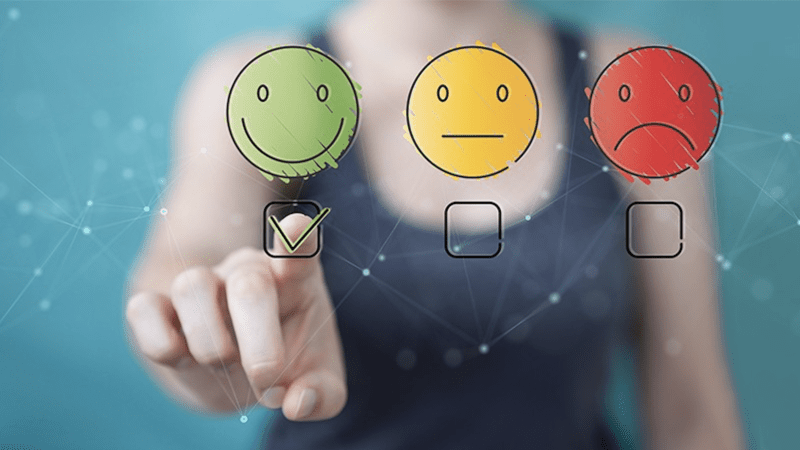However, consumer research reveals that customer satisfaction has remained the same, if not declined. While companies are now more equipped than ever to serve customers, service still falls short, and the difference between the leaders and the laggards in customer experience is becoming even more apparent.
The health of a business depends on its customers. In an economic downturn, customer experience becomes even more important. Customers will still demand quality customer service, even if a company might struggle with declining revenue, budget cuts, and limited resources behind the scenes.
The key to success is to fuse operations with customer experience strategies — and approach it as a long-term strategy versus a short-term goal. Following, I share a few core lessons that I view as critical for businesses to apply to improving customer experiences in a digital world.
Meet customers where they are
First and foremost, it’s important to understand customer preferences. In an increasingly digital world, the channels with which customers communicate vary from person to person. According to a recent survey on the science behind strong customer relationships, different demographic groups have varied preferences for communication — particularly among different generations. For example, Gen Z is three times more likely to communicate with vendors via text than other generations.
These preferences matter when it comes to the technologies a company chooses to go digital. When we evaluated our tech stack at Branch, we knew we needed a way for us to connect with customers via SMS — which reaches a crucial demographic for our company. SMS used to be a large, untapped channel for us, and it sparked important questions like, “Where else are customers trying to reach us that we aren’t aware of? How can we manage these channels in a way that doesn’t overburden our staff?”
We needed to revamp our workflows to connect phone, SMS, email, and in-app chat, so we could meet our customers where they were. To provide exceptional customer experience, we needed to view inbound messages, easily retrieve any inquiry on any channel, and empower our teams to jump in on any conversation — all while having the most up-to-date customer context to streamline our responses.
We saw a boost in engagement and customer happiness when we personalized the customer experience in this way. The key was to provide more options for customers to pick at their leisure — while making it easier to connect with a human agent when needed.
Team matters
A seamless customer experience depends on streamlined operations and frictionless cross-collaboration among team members. If there are data silos or if platforms can’t integrate, there can be massive inefficiencies due to a disjointed network of systems. This friction can cause delays and frustrate staff, ultimately leading to unhappy customers.
Businesses can achieve productivity by boosting operational efficiency, and every employee should feel empowered to serve customers with minimal roadblocks. In the digital age, message exchange is much different than chatting over the phone or meeting in person. A business must have the right platform to fit its needs to account for this evolution in message exchange. For example, our team uses Front to ensure our customer communication is quick and efficient. It has led to improved customer satisfaction across the board. By building this foundation, we saw a 40% increase in our support team’s productivity, which corresponded with our CSAT scores improving from 85% to over 90%.
There’s an expectation that good service is fast service, which can be accomplished when the entire team feels supported with the right resources. Proper resourcing can help a team quickly route messages to the right support members, ultimately leading to more efficient customer support.
Automate to advantage
We created our business model to deliver exceptional customer experiences with high-quality engagement in what we’ve coined “high-touch one-to-one communications.” Emails, in-app notifications, and SMS are set up to send automated messages via programmatic communications. Having this initial self-service option helps streamline and organize messages more efficiently. Once an inquiry becomes more complex, we ensure the customer can switch to a human agent and enter a high-touch conversation quickly and easily.
While autoresponders can help users understand their options, customers paying policy premiums have the expectation that they can get one-on-one, personalized help with their insurance policy when needed.
One recent example is when a customer spoke with one of our Member Support Specialists about their new policy. The customer had multiple questions and needed to ask them all at once — and they needed three different specialists to assist them. The team was able to answer all of their questions on coverage and discounts using the right combination of automation and human interaction. It yielded a customer experience that not only moved at the customer’s pace, but also stayed with his preferred method of communication through chat services.
Being in a customer-centric industry, we have to meet and exceed customer expectations like this. Automation as the initial touch point sets a business up for success.
In a world where customers and businesses have more digital interactions than face-to-face interactions, it’s critical to meet new forms of nuanced communication. These three tenets of good customer experience keep customers satisfied by gaining and maintaining their trust and loyalty. A good customer experience is not only memorable, but a strong reason for customers to come back — and naturally refer their network, which leads to more business.
Meeting customers where they are, understanding their goals, and using the right tools to keep interactions efficient are essential must-haves for a successful customer interaction and, subsequently, supports efforts around customer retention. With today’s economic headwinds, striving for exceptional customer experiences is crucial, and these three lessons can ensure customer success.
Source: Digital Insurance








